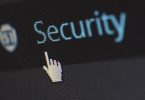We live in an increasingly technologized world which is both a good and a bad thing. It can’t be denied that innovation and technological advances have made our lives infinitely easier, but it’s just as true that the internet and everything related to it also bring a new set of challenges and risks that didn’t exist until recently.

Phishing attacks are one of the threats that have emerged with the rise of the internet and a lot of people fall prey to this type of cybercrime. However, there are ways in which you can stay safe and keep phishing scams at bay. Here’s what you need to know.
Browse responsibly
The adage think before you click is probably the wisest piece of advice an internet user could ever receive. People can easily get swept into the wonderful online world and forget all about the threats that lie underneath, blindingly believing everything they see or read. This naïve and trusting attitude can have terrible consequences. We advise you to keep your guard up and use your common sense when browsing online. That means you should think twice before clicking on a link, downloading a file or opening an email attachment. If anything seems off and you’re not 100% that what you’re doing is safe, don’t go on with it and go back to safety.
Watch out for red flags
The easiest way to block phishing attacks is to practice caution and always be on the lookout for potential red flags. Knowing how to spot phishing attacks will keep you on the safe side. It’s not that hard to train your eye and identify the warning signs as many of them are pretty obvious. For example, phishing emails usually look quite suspicious, with unusual wording and typos that will immediately catch your attention if you read them carefully. The same goes for fake sites that have poorly written content or ask you for sensitive information citing very strange reasons or improbable situations. Needless to say, if you come across these signs, you should take your business elsewhere.
Use multi-step authentication
Let’s say a cyber criminal gets hold of your username and passwords. What happens next? He’ll have free access to all your accounts, right? Not if you use multi-factor authentication. If you’ve been cautious enough to secure your accounts by adding another authentication method, the fact that your password has been compromised won’t affect you. You’ll still be protected by the extra layer of security provided by the second authentication factor, be it a code or a fingerprint, eye or face scan.
Keep your devices updated
The devices you use have security features that are meant to keep threats at bay, and manufacturers always strive to improve on these aspects, fixing bugs and addressing weaknesses that might represent a risk. That’s why it’s wise to keep the devices you use updated and benefit from all the improvements that are being made to keep you safe.







Leave a Comment